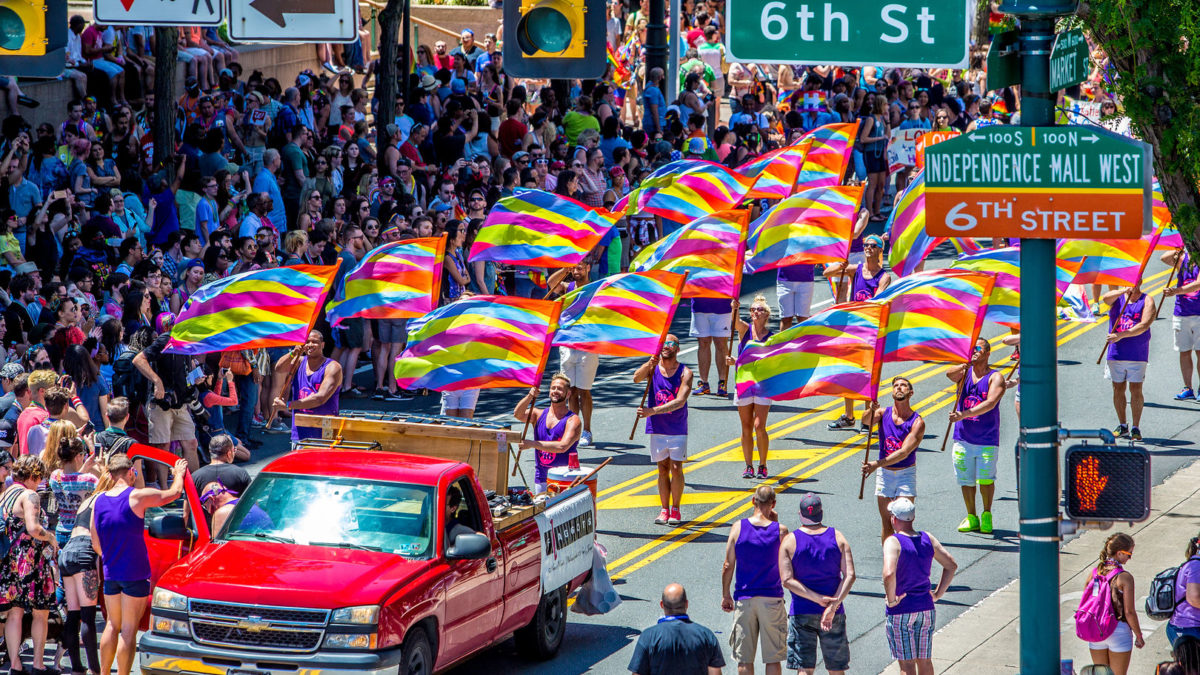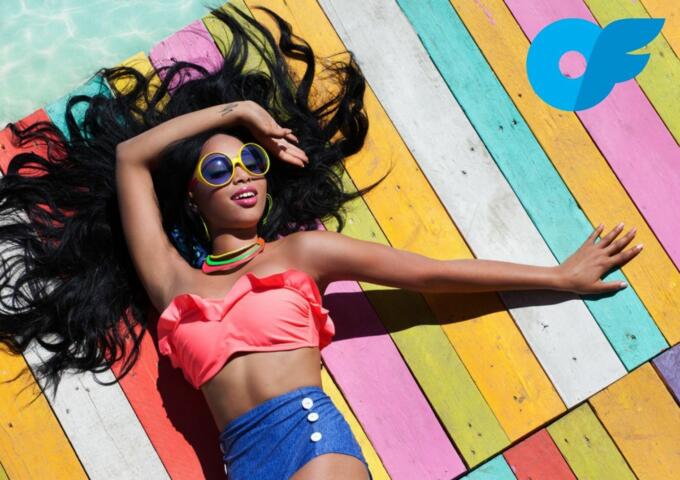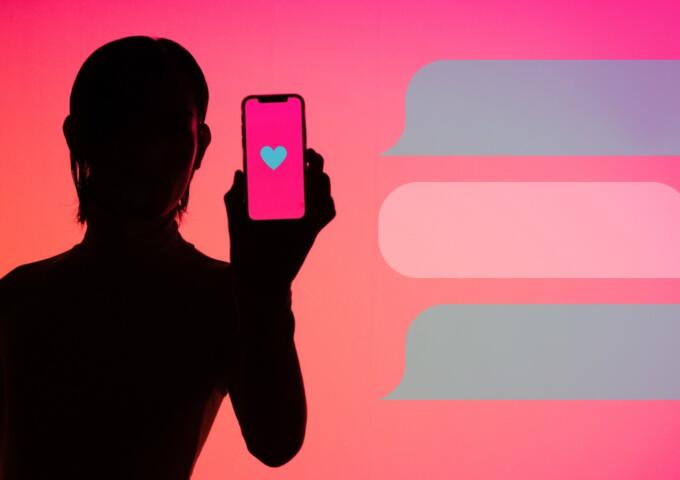Another June, another Pride and another opportunity to see how far the LGBT community has come.
Gays and lesbians have experienced a radical cultural shift over the last 50 years, from extreme alienation to something approaching mainstream acceptance. This shift has been called the “fastest of civil rights movements” in history. Yet even as queer Americans gain access to legal protections and see greater representation in media, the battle continues regarding how to celebrate this purported liberation.
In a since deleted tweet, Twitter user @Lesbiennes argued,
- Large corporations just want your money
- Lesbian exclusion is ugly.
- Trans women of color are the ones that lead the fight for our rights
- Please don’t bring your k*nks/fet*shes to pride, there are minors @ pride and this can sexualize the event.”
Unsurprisingly, the internet had reactions to the fourth point. Some gay kinksters jumped in to disagree, arguing this kink shaming mentality was more of the squeamish oppression that has held back lesbians, gays and bisexuals for all of history.
However, @Lesbiennes was not alone in reservations about seeing nudity, sexuality and BDSM affiliations at the annual Pride parade. One Twitter user who goes by the name @DeadShedStudio wrote the following:
“I went to a Pride event once and was having a blast until I came across people in bondage gear. My brother was right next to me! This was a very small Pride festival…it just bothers me how people [think] it’s [OK] to bring their sex shit to Pride.”
Another, who went by the name @Snootermelon, had a similar mindset.
“LGBTQIA+ encompasses people of all ages and should be able to safely come to a place where they’re supposed to be safe. This is why so many people still assume all LGBT people are gross sexual deviants. Stop enabling people to boil us down into a fetish!”
Online and in real life, however, others disagreed, arguing that this cautious mentality defeats the point of the event. On Facebook, there were multiple discussions on the topic and alternate points, like this one from user Anna Frangiosa:
“Like sure, don’t be explicitly sexual in front of kids, but wearing a costume or being naked isn’t inherently sexual. Plus people who bring their children to these types of events should be prepared to have [a] dialogue with them about what is healthy sexuality since the event is literally about this…”
These were but a few examples of the debate, a contention that has existed since the early days of the movement. At the core is the question of whether the purpose of LGBT liberation is shattering oppressive institutions or to peacefully integrate minorities into the fabric of existing social structures.
This has been an issue since the origin of Pride.
This year’s iteration of Pride is a particularly symbolic one for activists, as it marks the 50th anniversary of the Stonewall uprising, a riot which lasted six days that kicked off the modern LGBT rights movement.
In the early morning hours of June 28, 1969, police raided the Stonewall Inn in Manhattan. The mafia-owned bar was one of very few that was openly welcoming to gay patrons and was frequented by some of the most marginalized members of the LGBT community: transgender people, drag queens, sex workers and homeless youth.
For that reason, it was a frequent target of police raids. People would be arrested for lacking identification or failing to meet gendered clothing requirements. As police gathered and arrested bar patrons outside, an angry crowd began to form. Eventually, a scuffle broke out that escalated into violence which lasted the better part of a week. In the aftermath, many were inspired to join in the organized rebellion.
“It was like the last straw. It was time to reclaim something that had always been taken from us,” Michael Fader, an activist immersed in the riot, poignantly noted in the book, Stonewall: The Riots That Sparked The Gay Revolution. “All kinds of people, all different reasons, but mostly it was total outrage, anger, sorrow, everything combined, and everything just kind of ran its course. It was the police who were doing most of the destruction. We were really trying to get back in and break free. And we felt that we had freedom at last, or freedom to at least show that we demanded freedom.”
At the time, there wasn’t a unified front to the movement, nor even consensus on the action at Stonewall. The Mattachine Society, then the largest gay organization, opposed the riot. They posted this at the Stonewall bar in the midst of the chaotic week.
From the perspective of the Mattachine Society, the solution to homophobic oppression was to integrate gays into mainstream culture, taking a cue from the civil rights movements of racial and ethnic minorities who had found some success by blending into white society. They openly opposed subversive actions and espoused loyalty to the United States and its laws.
While the Mattachine Society itself fizzled out, some of their ideas about achieving cultural tolerance have remained. Much of the progress for LGBT rights has been made in integrating gays, lesbians and transgender people into some of the more traditional cultural institutions, like marriage rights and military service. The idea that gays and lesbians are just like heterosexuals can be seen in mantras like “love is love,” often found on rainbow-covered merchandise handed out at Pride events today.
Pride has become, to many LGBT rights activists, more of a corporate block party than a celebration of rebellion or liberation. In response to what is perceived as “the over-commercialization of gay events, ”the Gay Shame movement was created. The movement, which prizes spectacle and militancy, desired to get away from making conservatives more comfortable and assimilating into existing society.
“We are committed to a queer extravaganza that brings direct action to astounding levels of theatricality,” noted Gay Shame on its now-defunct website. “We will not be satisfied with a commercialized gay identity that denies the intrinsic links between queer struggle and challenging power.”
In 2019, the LGBT community is in a potentially precarious spot. While cultural attitudes towards same-sex relationships and diverse gender identity have dramatically shifted, many rights remain in contention for LGBT people, and there has been much backsliding underthe Trump administration.
Marriage equality may be the law of the land, but discrimination in housing, employment and access to healthcare continue to be an issue, especially for transgender Americans.
What is the purpose of Pride events in this political climate?
For many attendees, it’s about affirming their identities publicly. For corporations and local businesses, the goal is simply marketing. For activists, this anniversary holds the opportunity to celebrate how far the movement has come and hopefully, gather momentum for further change.
For some people, it’s just a big party.
This year, there are a ton of Pride events for all types of celebrants, many specifically for kids. All those who wish to celebrate the LGBT movement are welcome. Ultimately, Pride will be what we make of it
TWITTER: @TIMAREE_LEIGH





